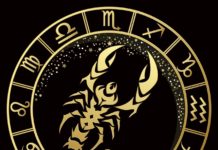
The good walkers (benandanti) were members of a widespread and apparently ancient dream cult uncovered by the Inquisition in the Friuli region of Italy. As the seasons changed during the “Ember Days,” the benandanti would enter deathlike trances and journey as spirits to a valley at the end of the world. There, they would wage an epic battle with evil witch-spirits to ensure the safety of the harvest.
In 1575, the benandanti first came to the attention of the Friulian Church authorities when a village priest, Don Bartolomeo Sgabarizza, began investigating the claims made by the benandante Paolo Gasparotto. Although Sgabarizza soon abandoned his investigations, in 1580 the case was reopened by the inquisitor Fra’ Felice de Montefalco, who interrogated not only Gasparotto but also a variety of other local benandanti and spirit mediums, ultimately condemning some of them for the crime of heresy. Under pressure by the Inquisition, these nocturnal spirit travels were assimilated to the diabolised stereotype of the witches’ Sabbath, leading to the extinction of the benandanti cult.
The first historian to study the benandanti tradition was the Italian Carlo Ginzburg, who began an examination of the surviving trial records from the period in the early 1960s, culminating in the publication of his book The Night Battles: Witchcraft and Agrarian Cults in the Sixteenth and Seventeenth Centuries. In Ginzburg’s interpretation of the evidence, the benandanti was a «fertility cult» whose members were «defenders of harvests and the fertility of fields». He furthermore argued that it was only one surviving part of a much wider European tradition of visionary experiences that had its origins in the pre-Christian period, identifying similarities with Livonian werewolf beliefs.
On Thursdays between the Ember days, periods of fasting for the Catholic Church, the benandanti claimed their spirits would leave their bodies at night in the form of small animals. The spirits of the men would go to the fields to fight evil witches (malandanti). The benandanti men fought with fennel stalks, while the witches were armed with sorghum canes. If the men prevailed, the harvest would be plentiful.

The female benandanti performed other sacred tasks. When they left their bodies they traveled to a great feast, where they danced, ate and drank with a procession of spirits, animals and faeries, and learned who amongst the villagers would die in the next year.
One walker described the journey: “I had the impression there were many of us together as though in a haze, but we did not know one another, and it felt as if we moved through the air like smoke and that we crossed over water like smoke.”
The benandanti were identified at birth, usually by being born with a caul. Belief in them was widespread, and any walker who refused to enter the trance on the Ember Days risked being beaten by his fellow villagers. Without exception, they were shocked at the suggestion that shamanic spirit battles were unchristian.
You can read about the good walkers in Russian here.
Больше интересных историй на русском языке вы можете найти здесь в Телеграм или здесь в ВК.
Больше информации по английскому языку вы можете получить на моем телеграм канале t.me/english_teacher_moscow
Больше адаптированных аудиокниг на английском языке вы можете найти в моей VK группе https://m.vk.com/public26206217
Больше афоризмов и пословиц вы можете найти в моем Инстаграм профиле.






























